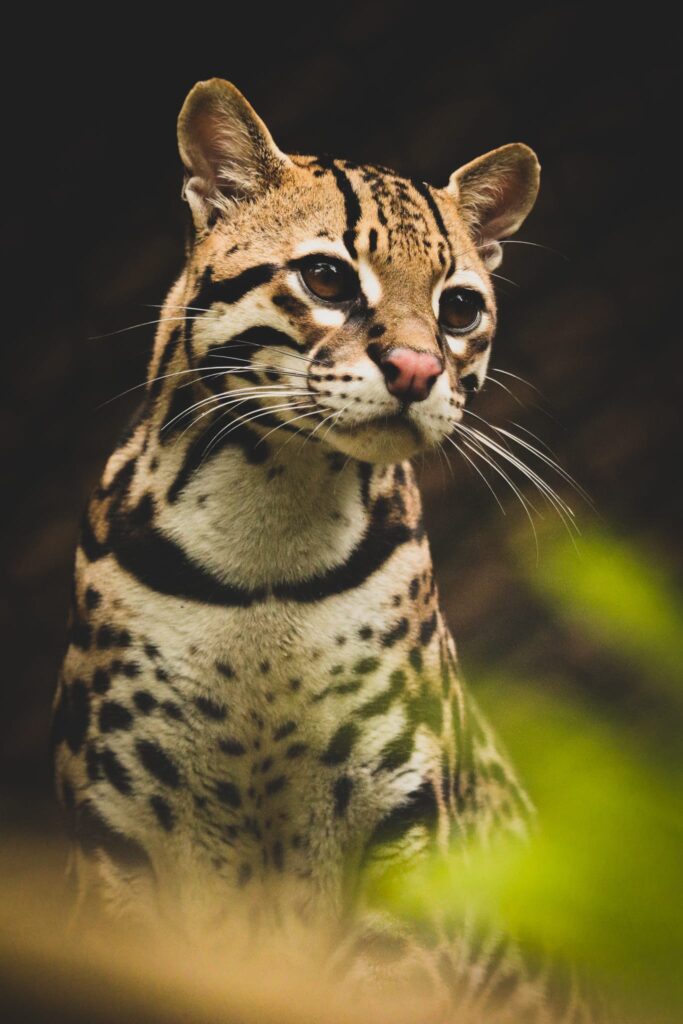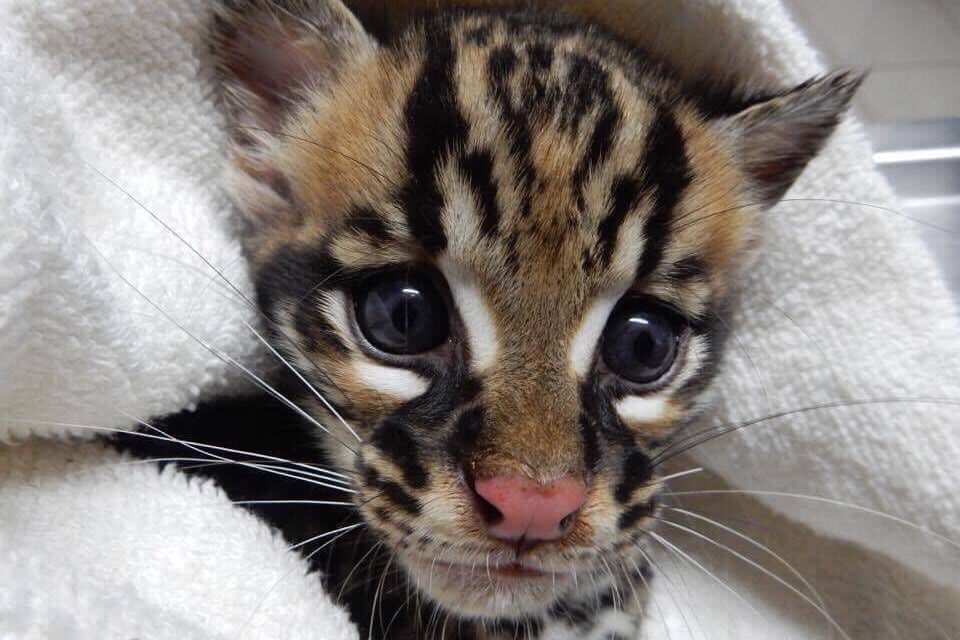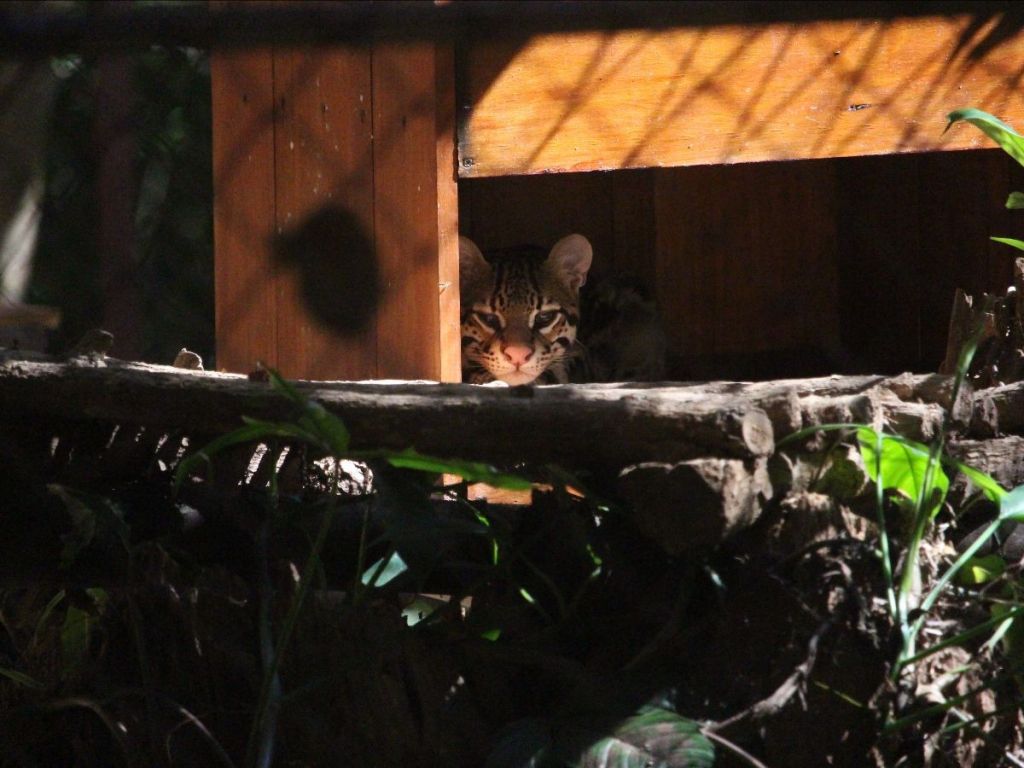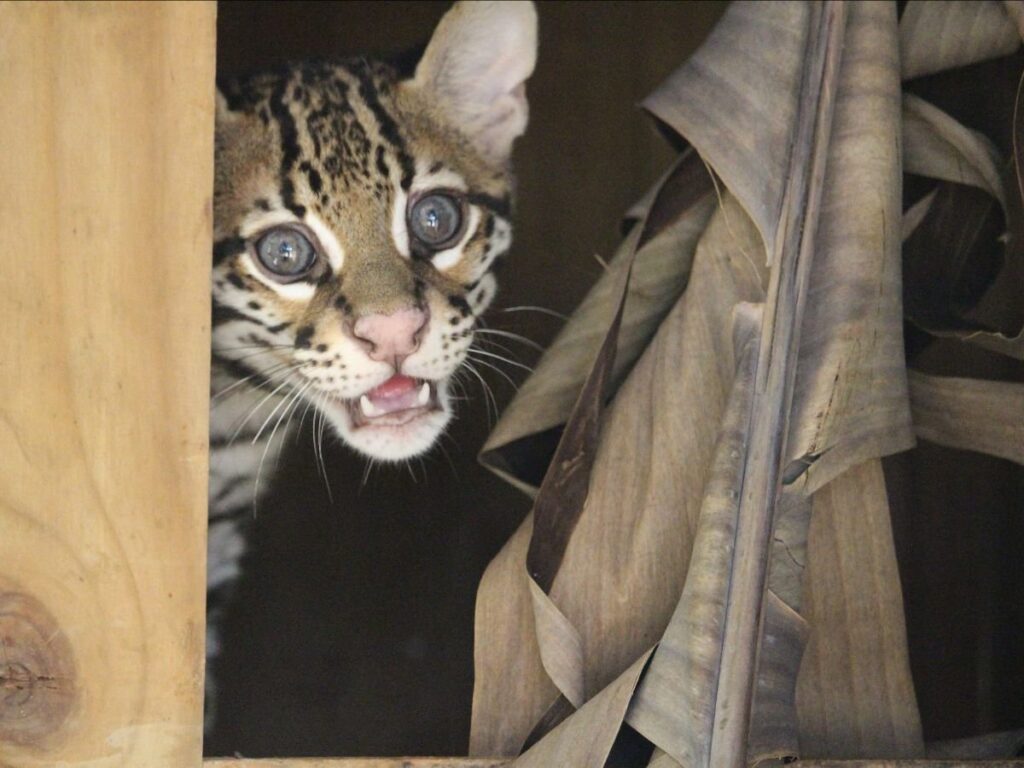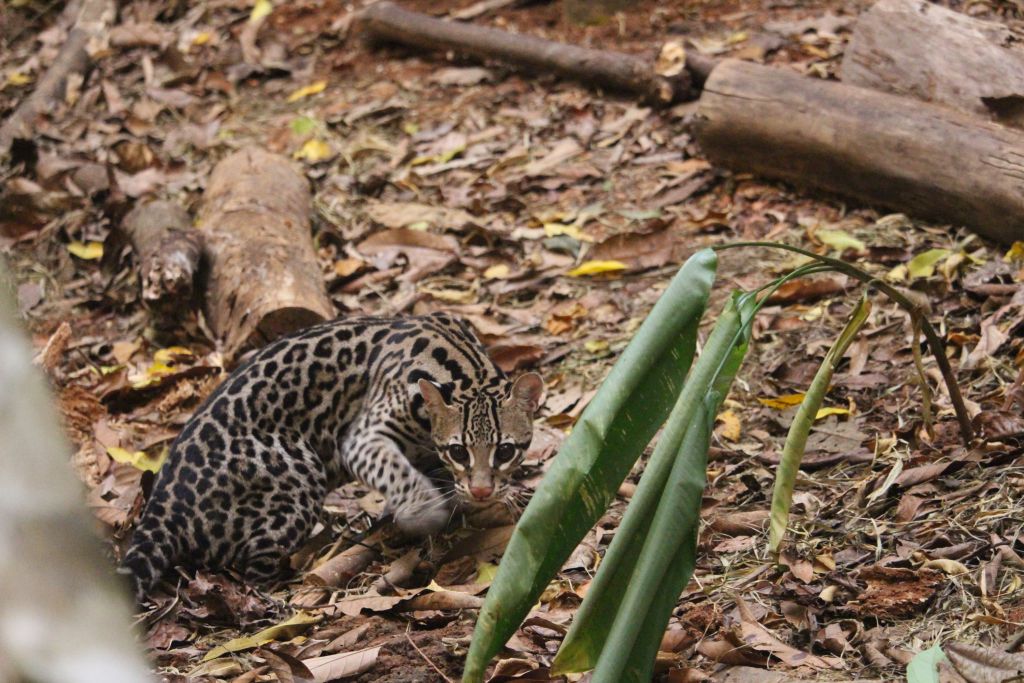Ocelots can grow up to 16kg in weight, with males growing considerably larger than females. They have golden – reddish fur with black ‘rosettes’ all over their back and sides. Sometimes they can form long continuous, horizontal chains across their body. They have a distinctive white spot on the back of each ear. Their tails are a lot shorter than other cats within the Leopardus family which makes them relatively easy to distinguish.
Ocelot
Taxonomy: (Leopardus pardalis)
Spanish Name: Manigordo; ocelote
Conservation Status: LEAST CONCERN (DECREASING)
Lifespan: Between 7-10 years old in the wild, but the oldest recorded ocelot in captivity lived to 21 years old.
Distribution: Can be found in parts of Mexico, extending all the way down to northern parts of Argentina.
Habitat: Forest, savannah and shrubland.
Behavior: Can be found in parts of Mexico, extending all the way down to northern parts of Argentina.
Weight: Up to 16kg
Diet: Small and medium mammals such as rats, mice, opossums and armadillos, reptiles, and fish.
Reproduction: Males become sexually mature at around 15 months of age, and females between 18 and 22 months. They can breed all year round in the tropics, and young become fully independent from their mother at around a year old, when they must find their own territories.
Threats: Their coat is heavily trafficked and was once sold for as much as $40,000 USD. Now, it is illegal to trade their pelts however you can still often find them on the black markets. They are also affected by habitat disturbance and deforestation. They are increasingly becoming victims of strikes by motor vehicles as well.
At Alturas: We currently provide refuge to Leo, a male Ocelot that was abandoned by his mother, together with his sister. Whilst the sister was released, Leo was not able to be released due to his behavior and inability to hunt successfully.


